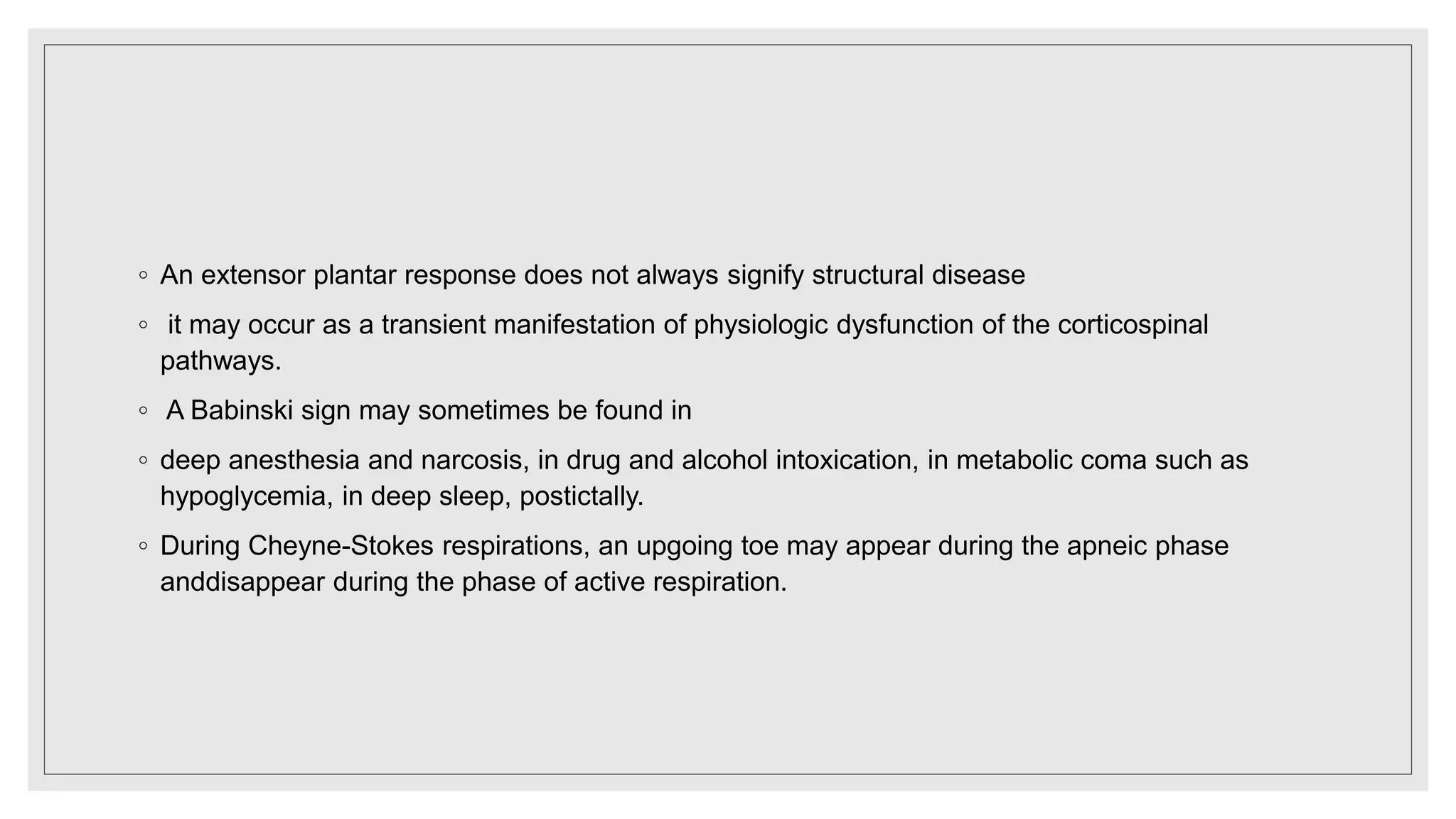The document discusses the plantar reflex and its associated responses, detailing normal plantar flexion versus the Babinski sign that indicates corticospinal system disease. It outlines the proper method for eliciting the reflex, common mistakes, and factors that influence its interpretation, such as patient sensitivity and neurological conditions. Additionally, it explores related reflex mechanisms and the implications of an extensor response in various clinical contexts.


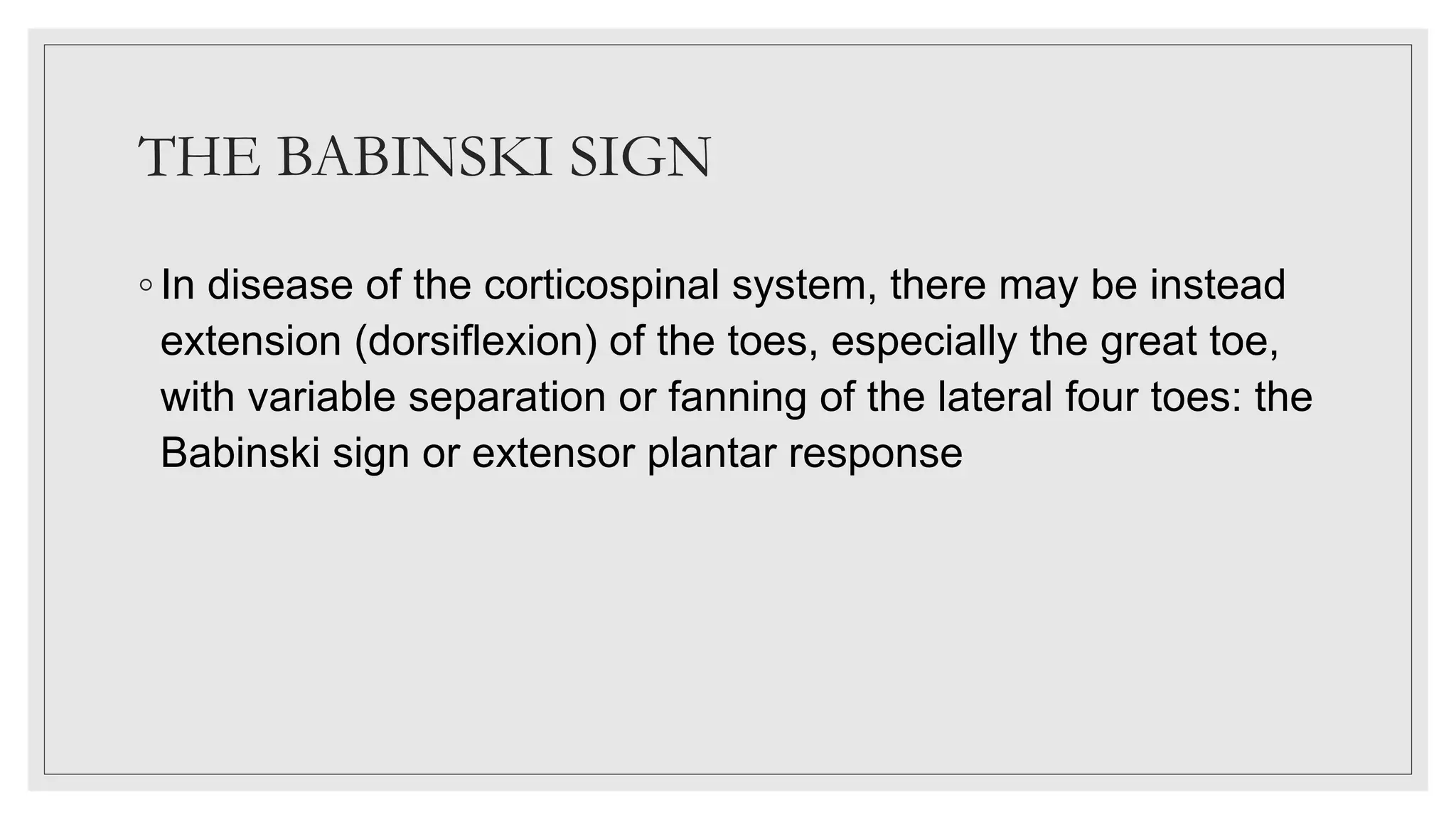


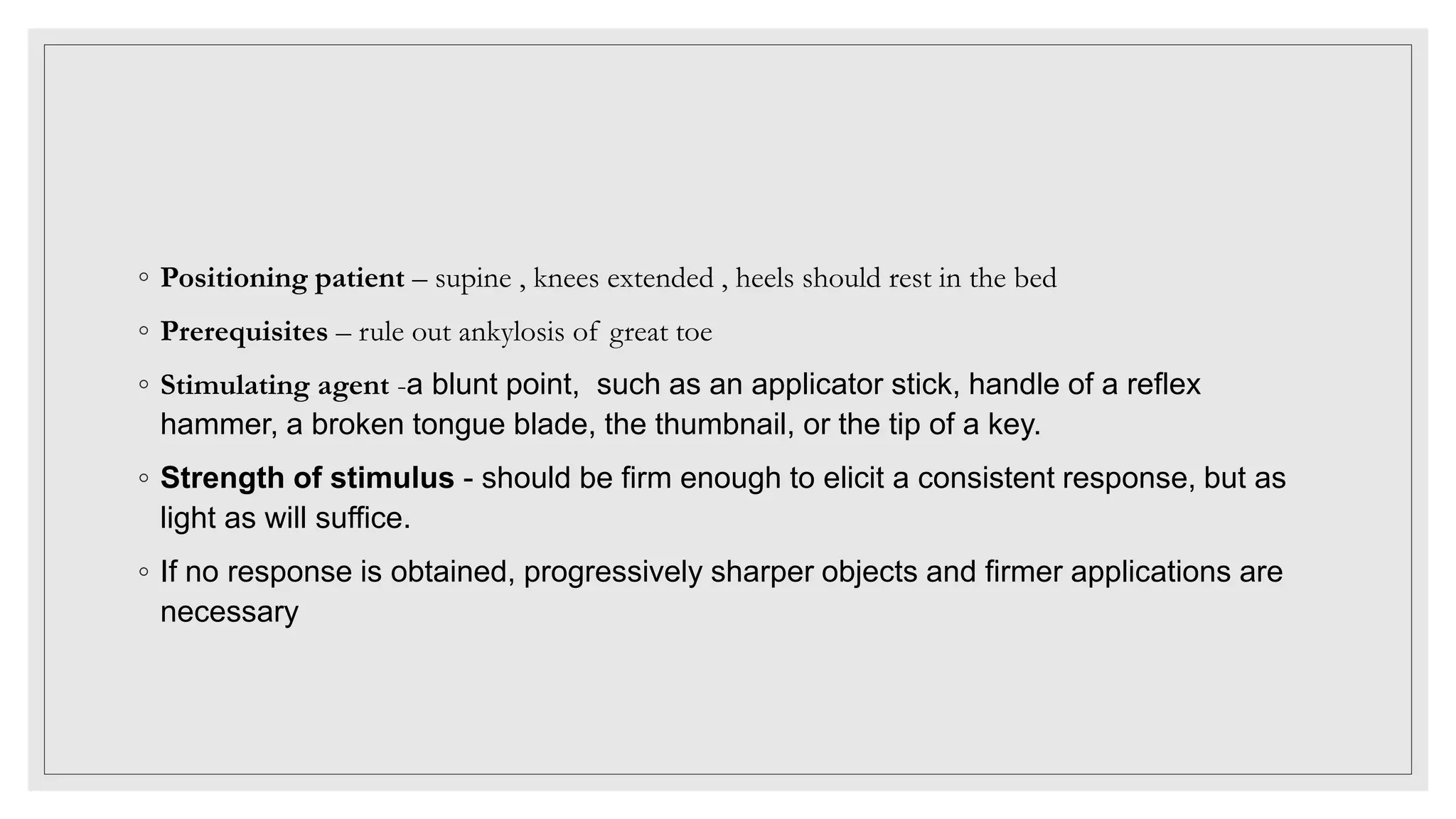

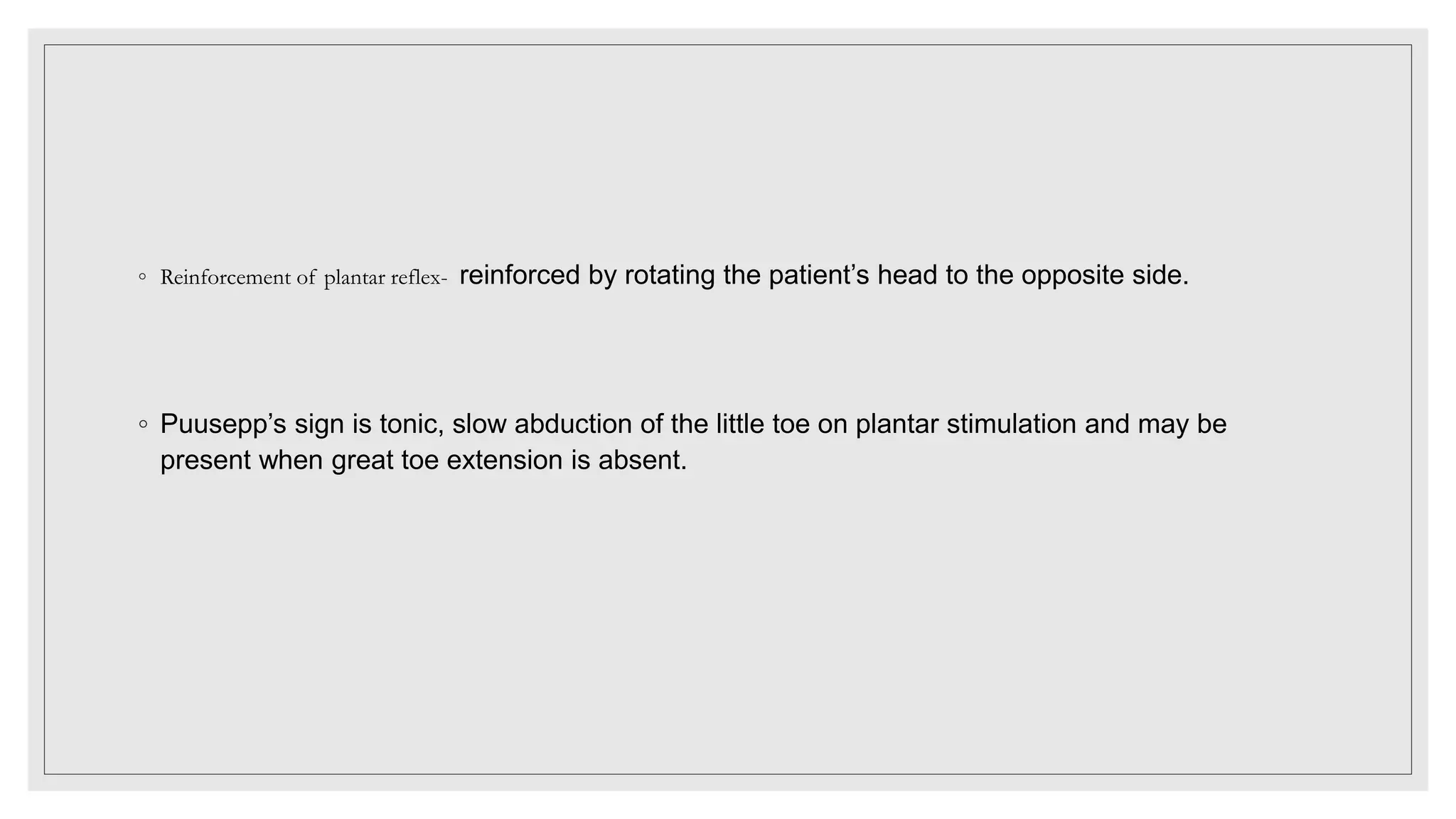




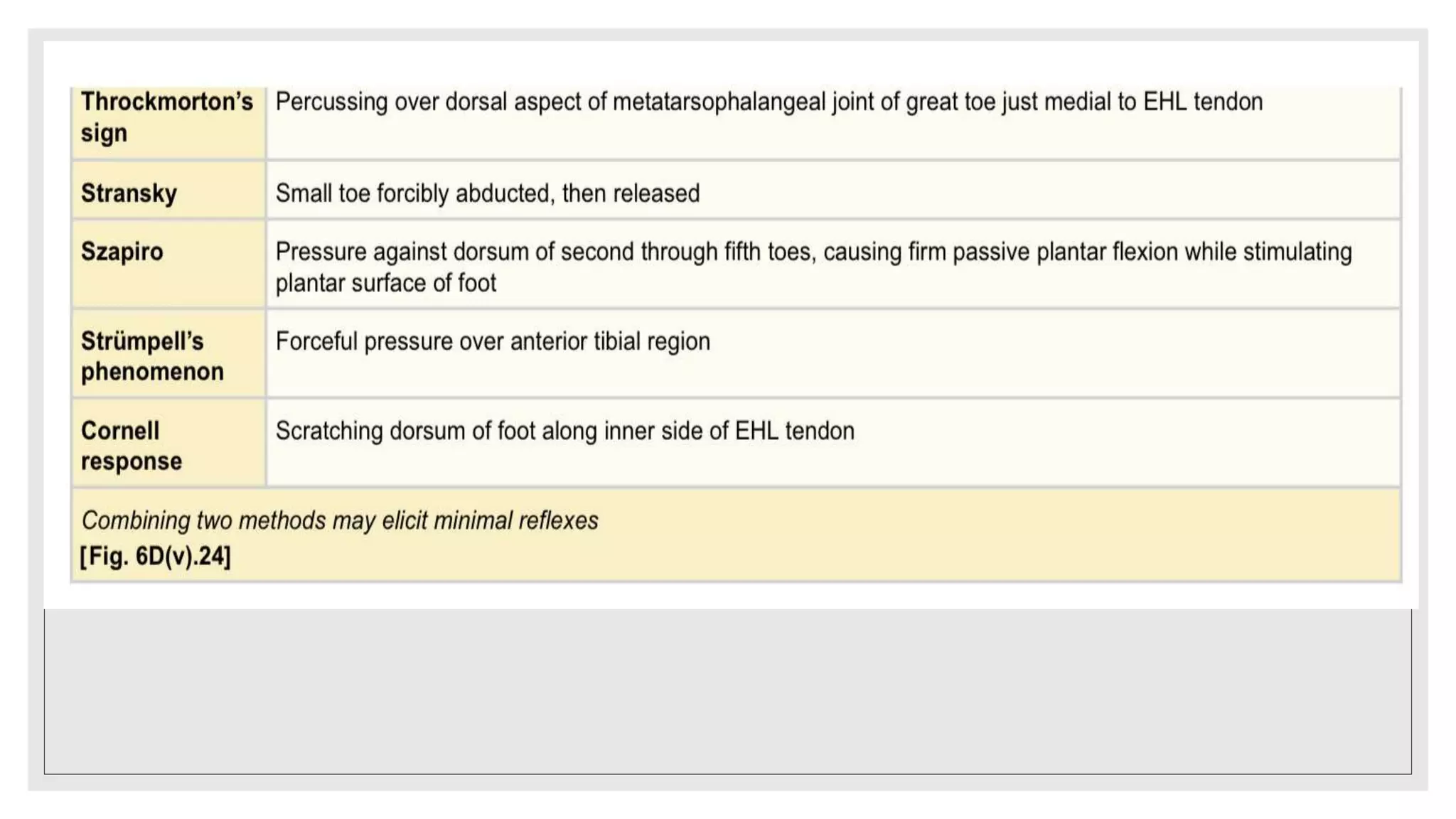

![◦ Toe extension may occasionally fail to occur because of disruption of the lower motor neuron
innervation to the EHL
(e.g., radiculopathy, peroneal nerve palsy, peripheral neuropathy, amyotrophic lateral sclerosis
[ALS]),
in which case the toe is paralyzed for voluntary contraction as well.
◦ Frontal lobe lesions may cause a hyperactive plantar grasp reflex , driving the toes downward.](https://image.slidesharecdn.com/plantarreflex-220901033311-b5c046de/75/plantar-reflex-pptx-15-2048.jpg)

